Why Ecotourism?
Fastest growing sector in tourism industry, ecotourism is said to be moving ahead with the growth rate of 15-20% every year. New in its concept, Eco travel or Ecotourism is about exploring places superfluous in their cultural, natural and historical richness. Witnessing and appreciating the beauty and significance of nature and culture of a place along with getting some time to spend it according to one's wish in stark peacefulness of nature are the very best characteristic of eco travel.
Availing the splendid sightseeing of places affluent in their natural beauty put travellers at complete ease with surroundings and in accordance with mental and physical calmness. Eco travel is not all about beholding and surveying the nature based places, but it also let you indulge into various nature based eco activities like wild animals spotting, birding, angling, trekking, rock-climbing, mountain-biking, river rafting, para-gliding, hills and lakes viewing, boating, nature walk and etc. Experiencing these recreational and informative activities are the best treat that an eco tour, unlike other trips, can offer to tourists.
Benefits of Ecotourism
Ecotourism, being one of the best form of travel, conceals many of the benefits touching directly to tourists and local community. The benefits of ecotourism are transmitted not only to tourists taking the tour, but also to local community and the whole ecosystem.
- The very first thing that tourists can benefit from their eco tour is to enjoy plenty of excursion. Recreational eco activities like wild animals spotting, birding, angling, trekking, rock-climbing, mountain-biking, river rafting, para-gliding, hills and lakes viewing, boating, nature walk and etc are worth making one's getaway full of unforgettable fun.
- During the tour, there is immense possibility that you get wider opportunity to learn from the local culture and historical significance of the places you are traveling. Exchange of cultural, historical and geographical information is quite enriching during one's eco tour.
- More the footfalls better the condition of resources are. Increase of eco traveler brings funds to resources/places where one is visiting, which definitely helps making the condition of resources (wildlife places, beaches, forests, and other eco places) better.
- The innate intention of ecotourism is to involve the local business in itself. Involvement of local business provides employment to local people, which ultimately lead to building the nation's economy better.
- Ecotourism helps motivating the conservation policy of government and local bodies. Better fund due to more eco traveler will tend to make government and local bodies understand the true value of resources, which, consequently, will demand better protection and strong conservation policy helping resources to live long.
How eco tour is different from Sustainable Tourism / Cultural Tourism / Heritage Tourism?
Eco Tour, a nature based travel, is relatively a new term which aims to conserve the resources (environment) and improve the well being of local people. Sustainable Tourism, on the other hand, is broadly centred upon consideration of local people, culture, customs, tradition and economic condition of locals, along with protecting and preserving the resources. Unlike Eco Tourism, Sustainable Ttourism puts its faith in the fact that tourism has to benefit the host (local pople) and natural resources have to be preserved for long time.
Cultural and Heritage Tourism are older terms in comparison to Eco Tour, as it is about offering tourist a glimpse and exploration of its cultural and historical destinations. On the other hands, Eco Tour is different in sense that it might be broader than Cultural and Historical Tour, as an eco place might be naturally as well historically and culturally rich.
Eco regions in India
The diverse geographical structure of the country brings great delight for eco travellers. Unlike other regions of the world, India with its thousands years old historical and cultural significance is full of eco places, amongst some are believed to be the best eco places of the world.
Eco regions of India are result of integration of different geographical structure and its varied topography. Like other regions in possession of single or less diverse geographical feature, India divides itself in many eco regions, each having their own climate and physical structure. Whether it is Western Ghats, North-Eastern regions, Western Himalayas, Gangetic plains or Eastern Himalayas, each of the eco regions are different from one other. With their significant differences in their state and characteristic of natural resources, vegetation and wildlife inhabiting, the eco regions of India conceal in its lap great wonder to be viewed and offer to eco traveler what only few regions on the earth have to show off.
Every part of the country is hoarded by heaps of eco regions full of natural sightseeing locations. The great Himalaya alone is home to many of world famous eco sites and let tourists avail eco excursion like trekking, wildlife viewing, orchid viewing, glacier viewing, birding, mountain-biking, nature walk and etc. Besides renowned hill stations like Munnar, Ooty, Manali and Darjeeling; popular wildlife parks like Corbett National Park, Ranthambore National Park, Kaziranga National Park and Periyar National Park; and famous rivers like Ganga and Brahmaputra are some of the richest eco places known all over.
How you should prepare for eco tour?
As an eco tour is different from other tour programme, it needs better planning and understanding of the places you are going to travel. Once you are there at your desired eco places, there are some certain guidelines you need to revolve in mind.
- Before you for leave for the destination, you ought to know your tour operator better about its affiliation, policies and awards. Besides, learning more about the destination you are going to visit will be of great use to you. It shall heighten your joy of sightseeing.
- Disposing the garbage and waste while you are on tour is must. It ensures that you are contributing greatly in conservation of the resources.
- As the golden rule of eco tour says, try to support the local people. You can do it by buying the local made eco friendly products like handicrafts items.
- Be ready to enjoy the cultural exchange while being at tourist places. By being interactive and respectful to local culture, you can gain a lot of information.
Do's
- Wear clothes having forest friendly colours like green, brown and khaki.
- Follow the rules and guidelines of the place you are visiting.
- While enjoying adventurous activities like trekking, rafting, etc, follow the safety guidelines.
- Park vehicles only in the specified area.
- Use flash less camera in wildlife parks.
- Flashes may make animals go angry.
- Be always alert while being in wildlife parks.
- Try to be always with your tour guide.
Don't
- · Never try to play with animals, insects and birds while being at parks.
- Don't litter. Dispose the waste properly.
- Don't smoke. Eco places are mostly no smoking zone.
- Don't wear bright coloured. It might infuriate animals in the park.
- Don't go swimming and boating in the lakes where these activities are restricted.
- Wearing strong perfumes and roaming in wildlife parks must be avoided.
Best time for Eco travel in India
The best time to take your eco trip to india depends upon the places you are willing to visit during the tour. As the country is famous for its diverse topography, many eco place have their own specific time to visit. Due to diverse climate factor, it is tougher to tell what time it is best for eco travel to India
The time between October and March are said to be the best time to visit India. And also for wildlife viewing, which is indeed the biggest eco delight in the country, these months are the best time to visit India. This is the time when most of the national parks and wildlife sanctuaries are open for visitors. Besides, most of the celebrations and festivals like Dussehra, Deepawali, Christmas, Eid, Holi, Camel fair at Pushkar and Chariot procession at Orissa occur during this time (October-March). Traveling during this season assures you having the best possible view of popular Indian eco places along with exploring its uniqueness of its diverse culture, tradition, custom and rich history.

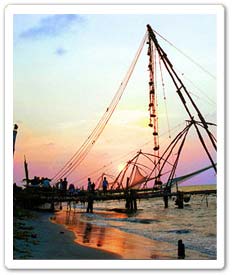 Ecotourism is entirely a new approach in tourism. Ecotourism is a preserving
travel to natural areas to appreciate the cultural and natural history of
the environment, taking care not to disturb the integrity of the ecosystem,
while creating economic opportunities that make conservation and protection
of natural resources advantageous to the local people.
Ecotourism is entirely a new approach in tourism. Ecotourism is a preserving
travel to natural areas to appreciate the cultural and natural history of
the environment, taking care not to disturb the integrity of the ecosystem,
while creating economic opportunities that make conservation and protection
of natural resources advantageous to the local people. 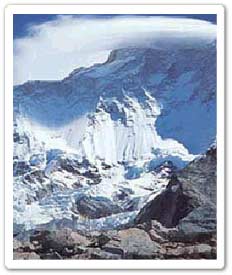

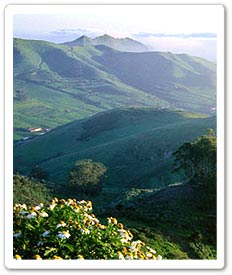 The
International Ecotourism Standard has been developed by the Ecotourism
Australia in conjunction with the Cooperative Research Centre (CRC) for
Sustainable Tourism of Australia. The International Ecotourism Standard is
based on the highly successful Australian Eco Certification Program, Agenda
21, and guiding principles for sound ecotourism certification (Mohonk
Agreement) developed by a gathering of ecotourism certification experts at
Mohonk Mountain, New York State, USA in November 2001. Green Globe 21 has
the exclusive licence for the distribution and management of the
International Ecotourism Standard. Green Globe 21 is the global Affiliation,
Benchmarking and Certification program for sustainable travel and tourism.
The Green Globe brand signifies better environmental performance, improved
community interactions, savings through using fewer resources and greater
yields from increased consumer demand.
The
International Ecotourism Standard has been developed by the Ecotourism
Australia in conjunction with the Cooperative Research Centre (CRC) for
Sustainable Tourism of Australia. The International Ecotourism Standard is
based on the highly successful Australian Eco Certification Program, Agenda
21, and guiding principles for sound ecotourism certification (Mohonk
Agreement) developed by a gathering of ecotourism certification experts at
Mohonk Mountain, New York State, USA in November 2001. Green Globe 21 has
the exclusive licence for the distribution and management of the
International Ecotourism Standard. Green Globe 21 is the global Affiliation,
Benchmarking and Certification program for sustainable travel and tourism.
The Green Globe brand signifies better environmental performance, improved
community interactions, savings through using fewer resources and greater
yields from increased consumer demand. 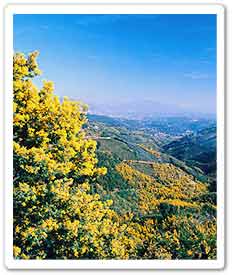
 Employing 260 million people and generating 10.7% of world’s GDP,
Tourism is the largest as well as the fastest industry of the world. Bigger
planning and management is in dire need to control the tourism industry, and
more important, to protect and conserve the biodiversity of tourist places.
Dealing predominantly with such serious issues, sustainable tourism comes in
great handy, as it is all about conserving the resources, valuing the local
culture and tradition and, contributing largely in economy.
Employing 260 million people and generating 10.7% of world’s GDP,
Tourism is the largest as well as the fastest industry of the world. Bigger
planning and management is in dire need to control the tourism industry, and
more important, to protect and conserve the biodiversity of tourist places.
Dealing predominantly with such serious issues, sustainable tourism comes in
great handy, as it is all about conserving the resources, valuing the local
culture and tradition and, contributing largely in economy.  With
the increased footfalls of tourists, the deep need today is that tourism
like other sector be planned and managed suitably. Sustainable development
of tourism is possible only if its follows some of its guidelines and
principles.
With
the increased footfalls of tourists, the deep need today is that tourism
like other sector be planned and managed suitably. Sustainable development
of tourism is possible only if its follows some of its guidelines and
principles. 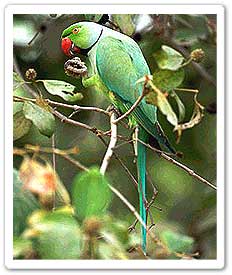 Ecosystem
Ecosystem nvenient a whipping boy for the sins and omissions
of others, both upstream and downstream.
nvenient a whipping boy for the sins and omissions
of others, both upstream and downstream.


